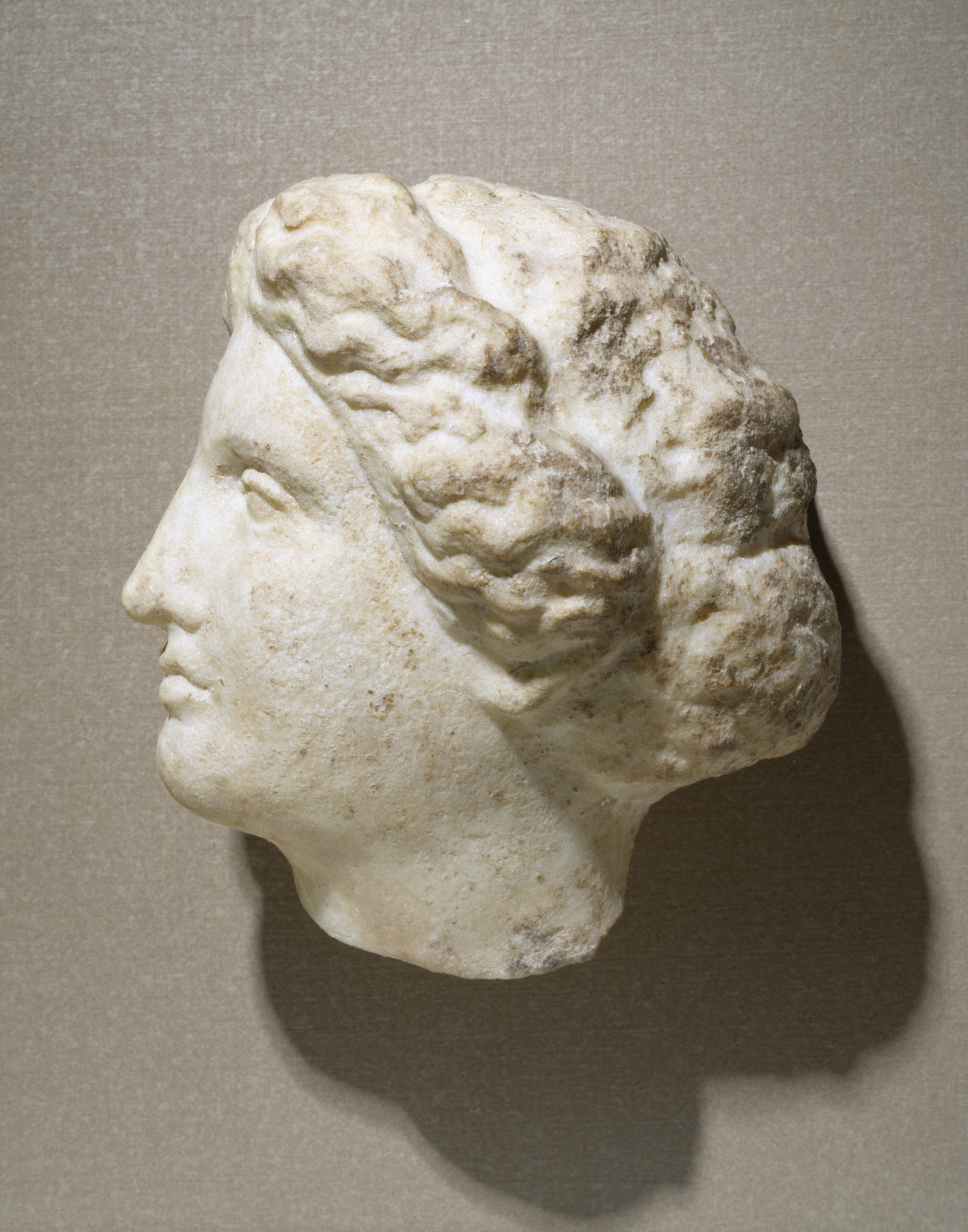Head of a Woman
(Ancient Greece )
In the first decades of the 4th century BCE, artists further refined the representation of facial features: the eyes became more deeply set, the lower eyelid almost disappeared, and the lips and chin became more delicate. The serene expression, the triangular shape of the forehead, and the loosely carved locks of hair on this statue typify the 4th-century variations on the Classical ideal. The head is from a grave monument, and paint would have softened the roughened surface of the hair.
Provenance
Provenance (from the French provenir, 'to come from/forth') is the chronology of the ownership, custody, or location of a historical object. Learn more about provenance at the Walters.
Ludwig and Renata Edelstein [date and mode of acquisition unknown]; Walters Art Museum, 1965, by bequest.
Exhibitions
| 1995-1996 | Pandora's Box: Women in Classical Greece. The Walters Art Gallery, Baltimore; Dallas Museum of Art, Dallas; Antikenmuseum Basel und Sammlung Ludwig, Basel. |
| 1988-1989 | From Alexander to Cleopatra: Greek Art of the Hellenistic Age. The Walters Art Gallery, Baltimore. |
| 1978 | In Search of Ancient Treasure: 40 Years of Collecting. The Walters Art Gallery, Baltimore. |
Conservation
| Date | Description | Narrative |
|---|---|---|
| 7/20/1970 | Treatment | cleaned |
| 1/23/1978 | Treatment | cleaned |
| 1/24/1978 | Treatment | cleaned |
| 7/1/1988 | Treatment | cleaned |
Geographies
Greece, Athens (Place of Origin)
Measurements
H: 5 5/16 × W: 3 15/16 × D: 4 7/8 in. (13.5 × 10 × 12.4 cm)
Credit Line
Bequest of Ludwig and Renata Edelstein, 1965
Location in Museum
Accession Number
In libraries, galleries, museums, and archives, an accession number is a unique identifier assigned to each object in the collection.
In libraries, galleries, museums, and archives, an accession number is a unique identifier assigned to each object in the collection.
23.220


